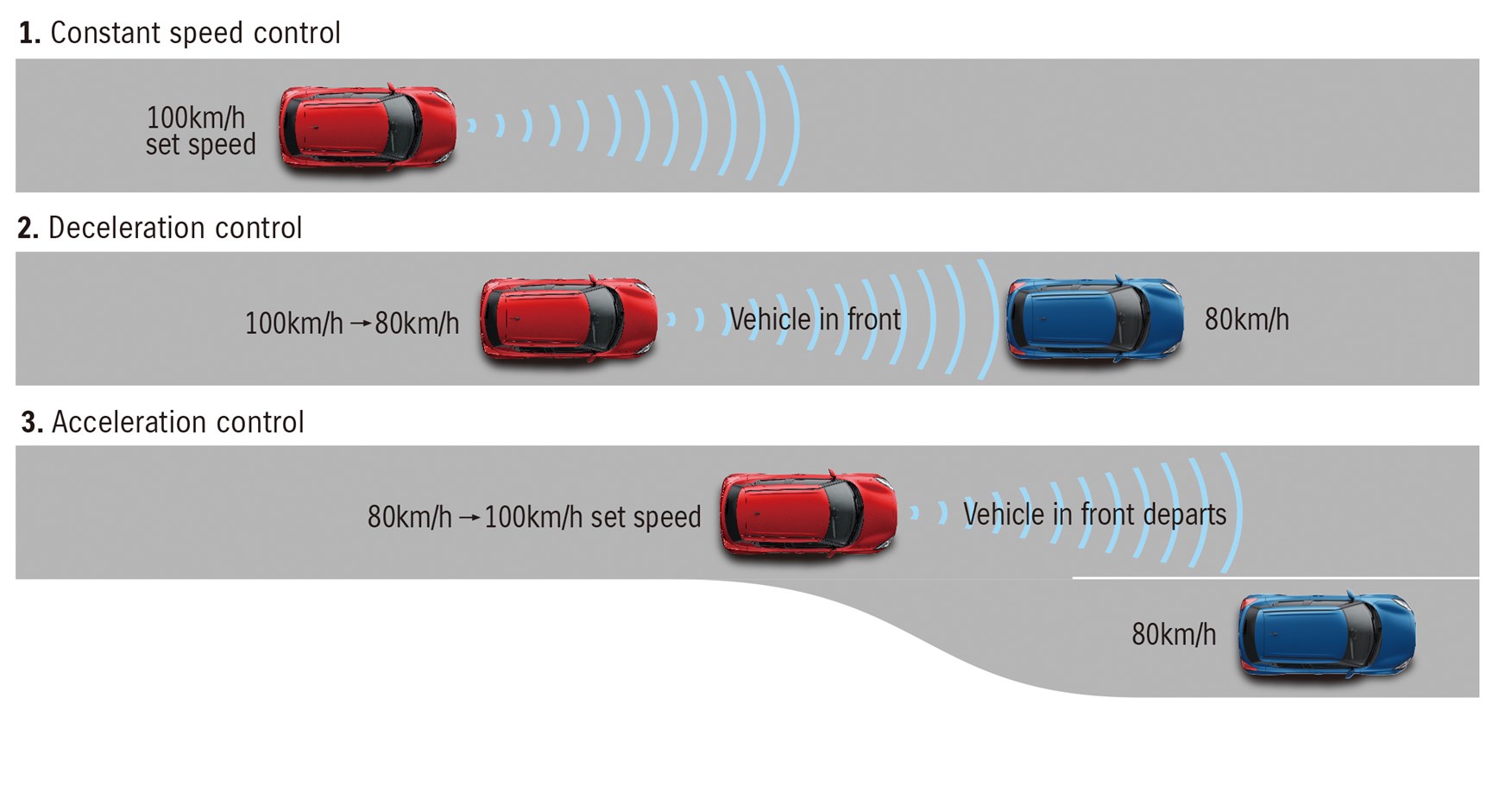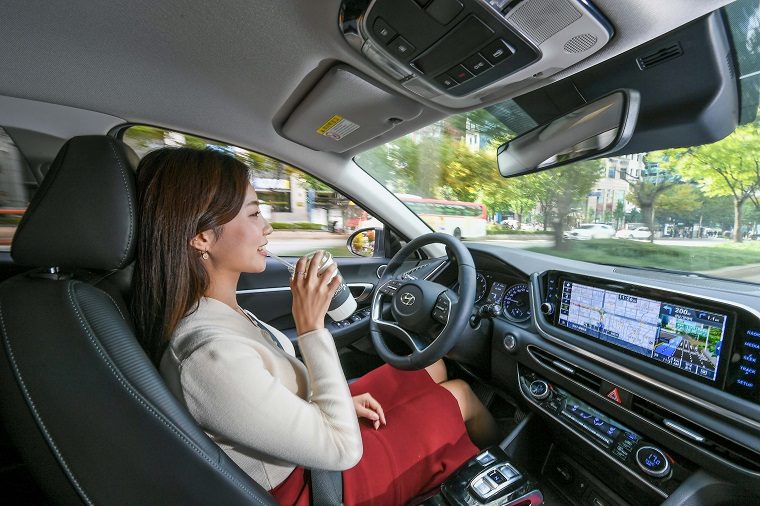Table Of Content

Each system has its strengths and caters to different driving needs and preferences. Tesla’s FSD Beta is at the forefront of autonomy but requires active supervision. GM’s Super Cruise excels in hands-free highway driving, while Ford’s Co-Pilot360 focuses on safety and driver assistance for everyday use. Mercedes-Benz and BMW offer systems that blend convenience, safety, and a step towards higher autonomy, maintaining a balance between automated and manual driving.
How Cruise Control Systems Work
But instead of pressing the accelerator pedal, it uses a different mechanism to maintain a constant cruising speed. The earliest variants of cruise control were actually in use even before the creation of automobiles. The inventor and mechanical engineer James Watt developed a version as early as the 17th century, which allowed steam engines to maintain a constant speed up and down inclines. Cruise control as we know it today was invented in the late 1940s, when the idea of using an electrically-controlled device that could manipulate road speeds and adjust the throttle accordingly was conceived. Quick acceleration and deceleration change the vehicle’s momentum drastically and wastes fuel.
Wet or Icy Conditions
What GM Wants Drivers to Understand about Super Cruise - Car and Driver
What GM Wants Drivers to Understand about Super Cruise.
Posted: Mon, 31 Jul 2023 07:00:00 GMT [source]
So, using cruise control is most fuel-efficient on level highways and long uphill and downhill grades. Adaptive cruise control (ACC) is the latest type of cruise control that’s becoming widely available in cars. ACC maintains your speed but incorporates sensors to measure the distance to the car ahead.
How to Use Cruise Control: Specific Things You Need to Know Well
The car will maintain speed even if road conditions change, so you must carefully pay attention to the road and traffic. When you’re using your car’s cruise control feature, don’t forget your defensive driving skills. If you have adaptive cruise control, you may need to set your distance so the system knows how much gap to leave between you and the car ahead of you. Some manufacturers include three settings, while others can have up to five.
The throttle valve controls the power and speed of the engine by limiting how much air the engine takes in (see How Fuel Injection Systems Work for more details). The system uses radar sensors to calculate the speed and distance of the car ahead. For instance, if the vehicle in front of you slows down/speeds up, a car with adaptive cruise control will reduce speed/accelerate automatically without any external inputs. It is a system that accurately maintains the speed set by the driver without any external intervention. It automatically controls the speed of a car and only allows the vehicle to hit a speed set by the driver.
Automotive Adaptive Cruise Control Market revenue to surpass USD 59 Billion by 2033, says Research Nester - GlobeNewswire
Automotive Adaptive Cruise Control Market revenue to surpass USD 59 Billion by 2033, says Research Nester.
Posted: Wed, 20 Sep 2023 07:00:00 GMT [source]
Steps

Another pressing question is what makes this electronic device so intelligent and intuitive. The cruise control system uses an actuator which controls the accelerator allowing the car to continue driving at a set speed. Adaptive cruise control is a more advanced technology that enables you to set a specific speed while the system automatically reads the traffic ahead and keeps your car at a safe following distance. Once the cruise control is active, you’ll need to use your gas or brake pedal to bring the car to the speed you want and then use the “set speed” button to lock in your speed. In the realm of modern vehicles, cruise control systems have evolved significantly, offering a range of functionalities tailored to enhance driving experience and safety.

How Does Cruise Control Work With Adaptive Cruise Control?
There's no definitive answer on whether that's the case, however, because this feature is very different from vehicle to vehicle. In the past 25 years, huge leaps in sophistication propelled cruise control to a point where some drivers may be confused by exactly what it is and how it works. Here, we will clear up any confusion about its functions, benefits, and limitations to help you on your car buying journey. Even vehicles with affordable price tags are equipped with intelligent features. Google launched its self-driving car a few years back, which completely relies on the technology of autonomous cruise control. Imagine getting all sorts of excited to go on a long road trip that you’ve always dreamed of taking with your best buddies.
All cruise control systems must have the capability to be turned off explicitly and automatically when the driver depresses the brake pedal and often also the clutch. Cruise control systems frequently include a memory feature to resume the set speed after braking and a coast feature to reduce the set speed without braking. When the cruise control is engaged, the throttle can still accelerate the car, but once the pedal is released, it will slow down the vehicle until it reaches the previously set speed. The invention of cruise control can be traced back to the late 1940s and early 1950s, when engineer Ralph Teetor developed the first-speed control system. This innovative feature was designed to help drivers maintain a steady speed, reduce fatigue while driving, and improve fuel efficiency. Over the years, cruise control technology has undergone significant advancements, leading to the development of sophisticated systems like adaptive cruise control.
It's like having an extra set of eyes on the road, making highway driving a breeze. Plus, some ACC systems can even handle stop-and-go traffic, bringing your car to a full stop and then picking up speed again when traffic gets moving. Today, drivers can choose from a range of cruise control systems, each with its own unique features and functionalities. This is only the case when driving for longer stretches on wide, clear roads, however.
It works largely the same as adaptive cruise control, but assists drivers with lane guidance and steering. There are several variations of semi-autonomous cruise control that include additional convenience features for the driver. Now, if conventional cruise control is your old reliable friend, then Adaptive Cruise Control (ACC) is like that friend's tech-savvy younger cousin. ACC isn't just maintaining your set speed, it's also keeping an eye on the car in front of you.
The "resume" feature has to be used each time after selecting the new gear and releasing the clutch. Therefore, cruise control is most beneficial at motorway/highway speeds when top gear is used virtually all the time. Cruise control (also known as speed control, cruise command, autocruise, or tempomat) is a system that automatically controls the speed of an automobile. The system is a servomechanism that takes over the car's throttle to maintain a steady speed set by the driver. Cruise control in a car has been built keeping in mind comfort and safety.
The low visibility and unpredictable road conditions make it unsafe to drive at such speeds. So, always be mindful of the weather condition and your surroundings before engaging the system. The system constantly maintains the speed set by you (driver) irrespective of road conditions.
The road is literally straight for hundreds of kilometers, and the thought of driving for 4-5 hours straight tires you out before you even get behind the wheel. Using cruise control at night is not advisable because visibility can be abysmal. Allowing the car to maintain the same speed can be risky during night-time.
For example, if there’s an incline ahead, cruise control adjusts the throttle accordingly to maintain the same speed. Initially, the system used a cable to control the accelerator (throttle valve). It adjusted the vehicle's speed by engaging the throttle with the help of an actuator that is controlled by a cable. The throttle valve is responsible for the power and speed generated by the engine. So, depending on the speed set by the driver, the system automatically adjusted the throttle position. On the latest vehicles fitted with electronic throttle control, cruise control can be integrated into the vehicle's engine management system.
Cruise control should not be used to maintain speeds above legal limits. Cruise control systems, even adaptable cruise control, may not always detect these streets correctly, causing accidents. Cruise control is a common feature, and adaptive cruise control is becoming increasingly widespread too. Adaptive cruise control, which monitors the ever-changing road ahead continuously via radar or laser, is potentially better equipped to handle congested roads.
To use cruise control safely, it’s best to know when you should and shouldn’t use it. [9] Using cruise control on the highway makes your driving more predictable to other drivers. Instead of constantly changing speeds, cars know how fast you’re driving and can follow safely behind you or pass. Cruise control is far more common on American cars than European cars, because the roads in America are generally bigger and straighter, and destinations are farther apart. The cruise control system controls the speed of your car the same way you do – by adjusting the throttle (accelerator) position. However, cruise control engages the throttle valve by a cable connected to an actuator, rather than by pressing a pedal.

No comments:
Post a Comment